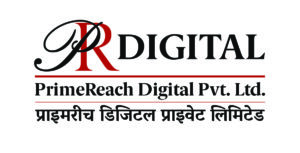
In today’s digital age, your online reputation can make or break your success. Whether you’re an individual professional or a business, how you’re perceived online has a significant impact on your opportunities and bottom line. This is where Online Reputation Management (ORM) comes into play. But what exactly is ORM, and why is it crucial in 2025? Let’s dive in.
What is Online Reputation Management (ORM)?
Online Reputation Management (ORM) is the practice of monitoring, influencing, and controlling an individual’s or organization’s reputation across the internet. It involves a set of strategies and techniques designed to shape public perception by influencing online information about a brand or person 1.
The importance of ORM in 2025 cannot be overstated, as evidenced by compelling data:
- A staggering 93% of consumers read online reviews before making a purchase 9.
- 84% of people weigh online reviews the same as they would a word-of-mouth recommendation from friends or family 9.
- Consumers are willing to pay 22% more for a product or service if the company has a good online reputation 9.
- 98% of people read online reviews at least occasionally, with 77% doing so frequently or always 3.
- A single negative review can cost a business up to 30 customers, highlighting the tangible financial consequences of neglecting your digital presence 3.
Components of ORM
- Monitoring: Keeping track of what’s being said about you or your brand online.
- Analysis: Evaluating the sentiment and impact of online mentions.
- Response: Addressing feedback, both positive and negative, in a timely manner.
- Content Creation: Developing and promoting positive content to improve online image.
- SEO: Optimizing online content to influence search results.
Why ORM is Crucial in 2025
As we move further into the digital era, ORM has become more critical than ever. Here’s why:
- Trust Factor: 90% of consumers read online reviews before visiting a business 2.
- First Impressions: Your online presence is often the first point of contact for potential customers or employers.
- Crisis Management: In the age of viral content, a single negative incident can quickly escalate, making proactive ORM essential.
- Competitive Edge: A strong online reputation can set you apart in a crowded marketplace.
ORM vs. SEO: Understanding the Difference
SEO (Search Engine Optimization)
- Primary Goal: Improve website visibility and ranking in search engine results.
- Focus: Optimizing a single website or web property.
- Metrics: Traffic, rankings, and conversions.
ORM (Online Reputation Management)
- Primary Goal: Shape and improve overall online perception.
- Focus: Managing multiple platforms and properties across the web.
- Metrics: Sentiment, review ratings, and brand perception.
Despite these differences, ORM and SEO complement each other. SEO techniques are often used in ORM strategies to promote positive content and suppress negative results 14.
Implementing ORM: A Step-by-Step Guide
1. Monitor Your Online Presence
- Set up Google Alerts for your name or brand.
- Use social listening tools to track mentions across social media platforms.
- Regularly search for your brand on major search engines.
2. Respond to Reviews and Feedback
- Address both positive and negative reviews promptly.
- Be professional and constructive in your responses.
- Use feedback as an opportunity to improve your products or services.
3. Create Positive Content
- Develop a content strategy that highlights your strengths and achievements.
- Publish regular blog posts, articles, and press releases.
- Encourage satisfied customers to share their experiences.
4. Manage Social Media Presence
- Maintain active and consistent profiles across relevant platforms.
- Engage with your audience regularly.
- Share valuable content that reinforces your brand message.
5. Utilize SEO for Reputation Management
- Optimize your website and social profiles for relevant keywords.
- Create and optimize profiles on authoritative websites in your industry.
- Build high-quality backlinks to boost the visibility of positive content.
ORM Tools and Technologies for 2025
As ORM continues to evolve, so do the tools available to manage it effectively. Here are some popular ORM tools for 2025:
Mention: Real-time brand monitoring across the web and social media.
BrandWatch: Advanced social listening and analytics platform.
ReviewTrackers: Centralizes review management from multiple platforms.
SEMrush: Offers a suite of SEO and content marketing tools useful for ORM.
Hootsuite: Social media management platform with monitoring capabilities.
These tools offer features like real-time alerts, sentiment analysis, and comprehensive reporting to streamline your ORM efforts.
ORM Best Practices for 2025
- Be Proactive: Don’t wait for a crisis to start managing your reputation.
- Stay Authentic: Transparency builds trust with your audience.
- Encourage Employee Advocacy: Empower employees to be brand ambassadors.
- Leverage User-Generated Content: Showcase positive customer experiences.
- Optimize for Voice Search: As voice assistants become more prevalent, ensure your ORM strategy accounts for voice search queries.
- Maintain Consistency: Ensure your brand message is consistent across all platforms.
- Prioritize Privacy: With increasing concerns about data privacy, be transparent about how you handle customer information.
The Future of ORM: Emerging Trends
As we look ahead, several trends are shaping the future of ORM:
AI and Machine Learning: Advanced algorithms will provide more accurate sentiment analysis and predictive insights.
Personalization: ORM strategies will become more tailored to individual customer segments.
Visual Reputation Management: With the rise of visual platforms, managing image and video content will become increasingly important.
Blockchain for Authenticity: Blockchain technology may be used to verify the authenticity of reviews and content.
Integration with Customer Experience: ORM will become more closely tied to overall customer experience management.
Case Studies: ORM Success Stories
Case Study 1: Domino’s Pizza Turnaround
In 2009, Domino’s faced a reputation crisis when a video of employees tampering with food went viral. The company responded with a transparent campaign acknowledging their mistakes and committing to improvement. By 2011, their stock price had tripled, demonstrating the power of effective ORM 1.
Case Study 2: Taylor Swift’s Reputation Management
After facing public backlash, Taylor Swift used her “Reputation” album and tour to reclaim her narrative. She engaged directly with fans on social media and created content that addressed criticisms head-on, successfully reshaping public perception 5.
Conclusion and Next Steps
In 2025, Online Reputation Management is not just an option—it’s a necessity. As the digital landscape continues to evolve, so too must our strategies for managing how we’re perceived online. By implementing a comprehensive ORM plan, utilizing the right tools, and staying ahead of emerging trends, individuals and businesses can build and maintain a positive online reputation that drives success.Remember, your online reputation is an asset. Invest in it wisely, and it will pay dividends in trust, credibility, and ultimately, success in the digital age.





